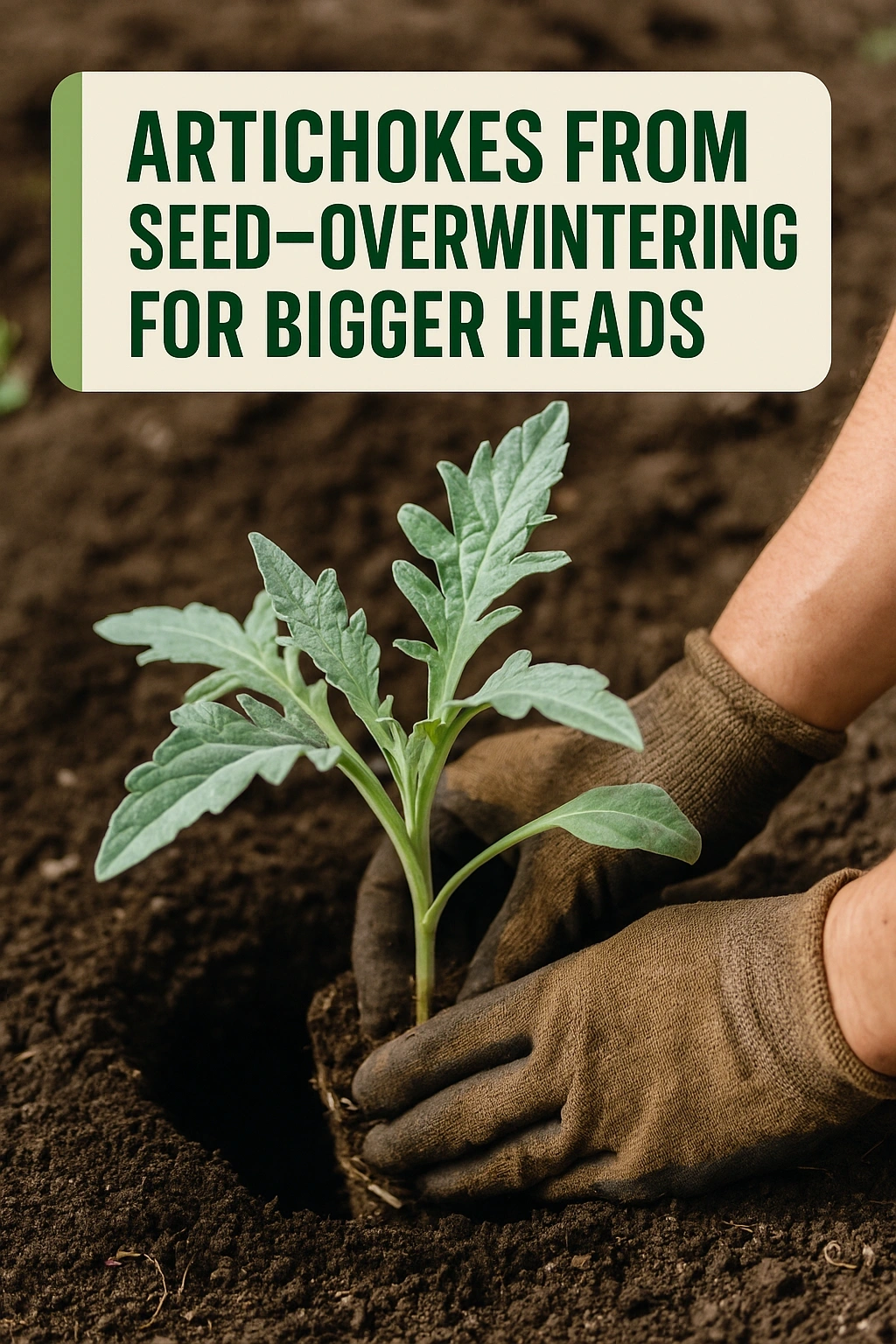
Artichokes, with their unique flavor and striking appearance, are a delightful addition to any garden. Growing artichokes from seed can be a rewarding experience, especially when you learn the ins and outs of overwintering them to achieve larger heads. This comprehensive guide will equip you with the knowledge needed to cultivate robust artichoke plants that thrive year after year.
The Appeal of Artichokes
Artichokes are not only delicious but also packed with nutrients. They are rich in antioxidants, vitamins, and minerals, making them a healthful choice. Their culinary versatility allows them to shine in various dishes, from salads to dips. Understanding how to grow them effectively from seed will enhance your gardening skills and provide a sustainable food source.
Starting Artichokes from Seed
Growing artichokes from seed requires careful planning and a bit of patience. The seeds should ideally be started indoors to give them a head start before the growing season. This section outlines the necessary steps to ensure successful germination and healthy plant development.
Choosing the Right Seeds
Selecting the right variety of artichoke is crucial. Some popular varieties include Green Globe, Imperial Star, and Violetta di Chioggia. Each has unique characteristics, so consider your climate and culinary preferences when making a selection.
Germination Process
Artichoke seeds can take two to three weeks to germinate. Start by sowing seeds indoors about 8 to 10 weeks before the last expected frost. Use seed-starting mix in trays or pots, and keep the soil moist but not soggy. A temperature of around 70°F (21°C) will promote optimal germination.
Transplanting Artichokes Outdoors
Once the seedlings have grown to about 4 to 6 inches tall and the risk of frost has passed, it’s time to transplant them outdoors. This transition is crucial for their development, leading to larger, healthier plants.
Choosing the Right Location
Artichokes thrive in full sun, requiring at least six hours of direct sunlight each day. Prepare your garden bed with well-draining soil enriched with compost. This will provide the necessary nutrients for the plants to flourish.
Planting Technique
Space the seedlings about 3 to 4 feet apart to allow for their expansive growth. Dig a hole deep enough to accommodate the root ball, and gently place the seedling in, covering the roots with soil. Water thoroughly to help them settle in.
Overwintering Artichokes for Bigger Heads
Overwintering artichokes is essential for maximizing their growth potential. This process involves protecting the plants during colder months to ensure they produce larger heads in the following growing season.
Preparing for Winter
Before winter sets in, cut back the foliage when it begins to die back. This will help the plant focus its energy on root development. Apply a thick layer of mulch around the base of the plants to insulate the roots and protect them from freezing temperatures.
Choosing the Right Mulch
Organic mulches, such as straw or shredded leaves, are excellent choices for overwintering artichokes. They provide insulation and gradually decompose, enriching the soil. Ensure that the mulch is applied generously but does not touch the stems to prevent rot.
Care and Maintenance During the Growing Season
Once spring arrives and the danger of frost has passed, your artichokes will begin to grow vigorously. Proper care during this period is vital to achieving the best possible harvest.
Watering Requirements
Artichokes require consistent moisture, especially during dry spells. Water deeply once a week, allowing the soil to dry slightly between waterings. This encourages deep root growth, which is crucial for larger head production.
Nutrient Management
Fertilizing your artichokes will significantly impact their growth. Use a balanced fertilizer or compost every few weeks during the growing season. This will provide essential nutrients that promote healthy foliage and larger heads.
Common Pests and Diseases
Being aware of potential pests and diseases is crucial for maintaining healthy artichoke plants. Regular monitoring and preventive measures can mitigate these risks effectively.
Identifying Pests
Common pests include aphids, slugs, and armyworms. Regularly inspect your plants for any signs of infestation. Introduce beneficial insects like ladybugs to naturally control pest populations.
Preventing Diseases
Artichokes can be susceptible to diseases like powdery mildew and root rot. Ensure proper air circulation by avoiding overcrowding and watering at the base of the plants to prevent fungal issues. Using disease-resistant varieties can also help mitigate these risks.
Harvesting Artichokes
Knowing when and how to harvest your artichokes is crucial for enjoying their peak flavor. The timing of your harvest can significantly influence the taste and size of the heads.
When to Harvest
Artichokes are ready to harvest when the buds are large and tightly closed, typically in late spring to early summer. Use a sharp knife to cut the heads off, leaving a few inches of stem attached. Harvesting at this stage ensures the best flavor and texture.
Post-Harvest Care
Once harvested, store artichokes in a cool, dry place or refrigerate them to maintain freshness. Consume them within a week for the best taste, as they can lose quality over time.
FAQs
Can I grow artichokes in containers?
Yes, artichokes can be successfully grown in large containers. Ensure the container has adequate drainage and is at least 5 gallons in size to accommodate root growth.
How long do artichokes take to grow from seed?
Artichokes typically take about 90 to 120 days from seed to harvest, depending on the variety and growing conditions.
What climate is best for growing artichokes?
Artichokes thrive in mild climates with cool summers and mild winters. They are best suited for USDA hardiness zones 7 to 10.
Can I grow artichokes as a perennial?
Yes, artichokes can be grown as perennials in suitable climates, allowing them to produce for several years if properly cared for and overwintered.
What should I do if my artichoke plants do not produce heads?
If your artichoke plants are not producing heads, check for issues such as inadequate sunlight, poor soil nutrients, or insufficient water. Addressing these factors can encourage head development.
